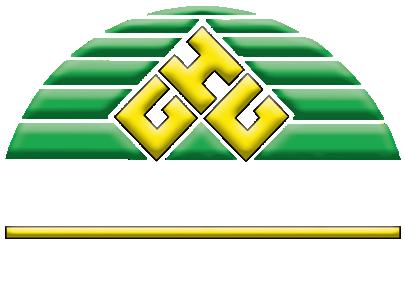




















Chris Nelson
T&O Sales Manager, East Canada chris.nelson@target-specialty.com 647.382.6868
Paul Powers
Toronto West / Niagara paul.powers@target-specialty.com 289.209.1869
Perry Brazeau
Toronto / East perry.brazeau@target-specialty.com 416.705.8006
Jason MacRae
Quebec North & West
jason. macrae@target-specialty.com 514.712.8006


Joey Losito
Quebec South & East joseph.losito@target-specialty.com 819.571.1677
Colin Hindle
Ottawa & Eastern Ontario colin.hindle@target-specialty.com 613.314.9711
Mark Obee
Northern Ontario
mark.obee@target-specialty.com 705.444.9010
Kyle Johnston
South-West Ontario kyle.johnston@target-specialty.com 905.351.6544



Josh Seibel
T&O Sales Manager, Western Canada josh.seibel@target-specialty.com 306.861.8296
Daren Collins
Mainland British Columbia daren.collins@target-specialty.com 403.559.8472
Gregor Kowalski
Vancouver Island gregor.kowalski@target-specialty.com 250.686.3909
Dwayne Simpson
Northern Alberta dwayne.simpson@target-specialty.com 403.391.1984


Mitch Davidson
Southern Alberta, Kootenays mitch.davidson@target-specialty.com 587.223.2083
Chris Paterson
Southern Alberta & Kootenays chris.paterson@target-specialty.com 403.540.0157
Chad Fauchoux
Saskatchewan & Manitoba chad.fauchoux@target-specialty.com
306.551.2041

8 What’s New INDEX OF ADVERTISERS
ALMACK AGRONOMIC SERVICES INC. 29 www.kooyagronomy.com
AQUATROLS 15, 23 www.aquatrols.com
BANNERMAN 14, 21 www.bannermansportsturfmagic.com
BELCHIM TURF 6 www.belchimturf.ca
BRAEMAR BUILDING SYSTEMS 7 www.braemarbuildings.com
BRETTYOUNG 19 www.brettyoung.ca/turf ENVU 4 ca.envu.com
GREENHORIZONS 31 www.greenhorizonssod.com
GROWER’S CHOICE Insert www.growerschoice.ca
ONTARIO SEED COMPANY 25 www.oscturf.com
P.D. SOLUTIONS 27 www.pdsolutions.ca
TARGET SPECIALTY PRODUCTS 2 www.target-specialty.com
TURF CARE 18, 32 www.turfcare.ca
ZANDER SOD CO. LIMITED 27 www.zandersod.com


Editor Madeleine White projects@ogsa.ca
Publisher Diane Davey diane@blenheim.ca
Advertising & Administrative Manager
Diane Davey diane@blenheim.ca Tel: 289-337-4305
Production & Design
Patrick Kilborn patrick@blenheim.ca
ONCourse is published four times a year (November / April / June / August) by Blenheim INK for:
ON THE COVER
2024 Today in Ontario 3rd place photo submission from James Papineau, Seven Lakes GC.
Ontario Golf Superintendents’ Association
Tel: 519-767-3341 Toll Free: 877-824-6472 Email: admin@ogsa.ca www.ogsa.ca
Published by Blenheim INK Administration Office: 503-5340 Lakeshore Road Burlington, ON L7L 7A8 www.blenheim.ca
ONCOURSE 2025
Although every effort is made to check material for publication, the association is not responsible for material published on behalf of its contributors. All rights are reserved by the publisher and any reproduction in whole or part without the written permission of the publisher is prohibited. Although some trade names may be mentioned in articles contained in this publication, no endorsement is intended or implied by the Ontario Golf Superintendents’ Association.
OGSA is committed to serving its members, advancing their profession, and enriching the quality of golf and its environment.



I am thrilled to serve as the OGSA President for a second consecutive year! With significant momentum heading into 2025, I’m eager to work alongside our dedicated board and staff to ensure this year is an outstanding success.
This past winter brought extreme weather events with record amounts of snow across much of the province. In addition, we experienced intense cold temperatures during the latter part of the season. As the weather breaks in early spring and the snow melts, I hope everyone’s turf emerges healthy, setting golf courses up for another excellent start to the 2025 season.
I’d like to welcome Ken Tilt, Superintendent at the Club at North Halton, to the OGSA board this year. Ken has already proven to be an invaluable asset, stepping up as one of our First Green liaisons and securing his club for the 2025 Assistants’ Tournament—an excellent start to his role as director.
This year began on a high note with The Canadian coming to Ontario. Our Ontario members and suppliers rose to the occasion, welcoming colleagues and friends from across Canada. With over 550 delegates and 340 suppliers in attendance, this was undoubtedly the largest turfgrass management conference hosted in Canada in recent memory. We were thrilled to collaborate with the CGSA to bring this national event to our province. Our collective efforts created an excellent template for future conferences, and we look forward to partnering with the CGSA the next time they come to Ontario. A special thank you to all the sponsors who powered the event, donated to the auction, and participated in the tradeshow. We couldn’t
have done it without your contributions, participation, and support.
On March 26 and 27, 2025, the board will meet to further define our objectives for the year and the outcomes from those meetings will be shared in the June issue of ONCourse. Key topics on the agenda include Rounds for Research, fundraising partnerships, regional and industry outreach, education and
As we move into the 2025 season, make space for team development, acknowledgment, and downtime.
services, and upcoming event opportunities. As we strive to reach 1,000 members, I see an opportunity to expand our membership by providing additional benefits and educational resources for equipment managers. This will be a key focus for 2025 and beyond, creating more opportunities for EM members within the association and industry. I encourage you to speak with your colleagues about joining the association. Participate in our events, apply for available scholarships, and connect with us to help us serve you better.
Looking ahead, the OGSA remains

committed to engaging youth through innovative programs like First Green and fostering future leaders via our scholarship initiatives. We encourage our members to continue adopting the Ontario BMP and to explore opportunities for crafting facilityspecific BMP documents for their courses. Additionally, we will continue providing opportunities for networking and skill development through our education program. Next year’s conference will take place at the Blue Mountain Conference Centre in Collingwood, January 20–22, 2025. Planning is already underway, and we’re eager for your feedback on how to continue elevating the conference experience so you and your teams can maximize the benefits of this 2.5-day education and networking event.
As we move into the 2025 season, make space for team development, acknowledgment, and downtime. Our Assistants’ Tournament on August 11 is a wonderful opportunity to connect your assistants with others in the industry to reflect on the season, enjoy a day of golf, and share good food and company before the season concludes. It’s a great reward for their contributions to making the golf season a success.
The Championship will take place at Deerhurst Highland and Grandview Golf Courses on September 22 and 23. This event offers a fantastic chance to unwind and share experiences with colleagues. We expect it to sell out again, so mark your calendars and watch for registration announcements in Clippings.
I wish everyone a fantastic start to the season, and I look forward to seeing you out there. ■

Take-All Patch
Summer Patch

• Rainfast in 15 minutes
• Foliar & root uptake


Anthracnose
• Dollar Spot & more



• Greater root mass
• Consistent chlorophyll production



Disarm is a group 11 fungicide specifically engineered to provide quick plant uptake and even distribution within the plant to deliver a Halo of Protection against many of the most destructive turf diseases.




Be sure to thank your ONCourse Committee! Without their support and major contributions, we would not have been able to deliver another four profound issues of ONCourse. Enjoy!

Chris Lecour Writer & Content Development; Sr. Turf Sales Representative, BASF.





Andrew Marsan Writer & Content Development; Turf Technical Sales, Plant Products.

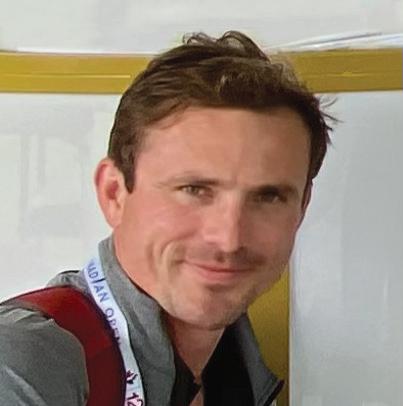
Mark Wiebe Writer & Content Development; Assistant Superintendent, Oakdale GC.
Development; Superintendent,

Al Schwemler Associate Editor, Writer, & Content Development; Fisherman Extraordinaire; Past President OGSA.

Development; Superintendent, West

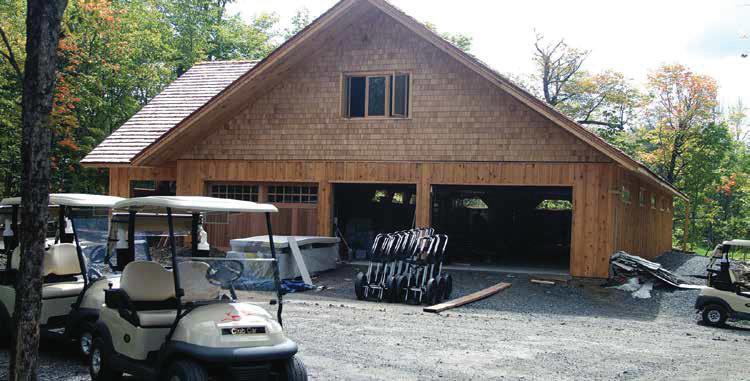




By Courtney White, Executive Director OGSA. manager@ogsa.ca
We’ve hit the reset button! Start taking your photos now as the season begins and don’t forget to #TodayInOntario and tag us @OntarioGSA to submit! We can’t wait to see what 2025 will bring!
Congratulations to Eleanor Winger, the 2025 winner of the OGSA Short Course Bursary! All University of Guelph Turf Managers’ Short Course students who are employed by an Ontario golf course are eligible for this award and the criteria is to achieve the highest marks within this cohort. Ellie has earned $1000 to put toward her professional development and a 1-year membership with the OGSA.
MEET YOUR 2025

COURSE WINNER
Eleanor Winger, 2025 Short Course Bursary Winner.
Thanks to funds raised during the 1000 ball challenge, the OGSA can provide some financial support for First Green events across Ontario. These funds are limited and available on a first come first serve basis to clubs or schools who require help covering off funds for school buses or supplies to execute the event. To learn more, contact the office!
We are excited to support the 1000 ball challenge in partnership with Golf Ontario again this year! This initiative supports youth engagement in the golf industry through First Green and the Golf for All program. Keep you eyes open for fundraising announcements! Support the OGSA team, join us, or participate!
OGSA EXECUTIVE

Ian McQueen
President St. George’s Golf & Country Club


Kevin Collier
Vice-President RiverBend Golf Community
Andrew Nieder
Secretary-Treasurer Deerhurst Resort

Owen Russell
Immediate Past President Hamilton Golf & Country Club


Upcoming OGSA Events
April 28, 2025 CAN/AM Pine Lake CC, Michigan, US
August 11, 2025
Assistants’ Tournament Club at North Halton
September 22-23, 2025 The OGSA Championship Deerhurst Highland GC & Grandview GC
It’s time to download the Provincial BMP and keep it handy. This tool is one of the most effective ways to demonstrate the environmental stewardship that superintendents adhere to each day. It’s also an effective training tool for new staff. You can find the link on the OGSA website home page.
Ken Tilt Director Club at North Halton


Brad Hutchinson Director Warkworth Golf Club
Paul Snider Director Blue Mountain Golf & Country Club
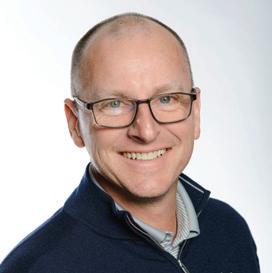
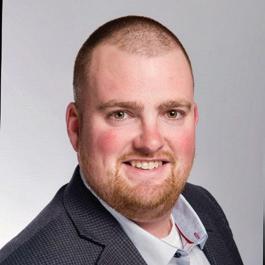
Jason Crawford Director Eagles Nest Golf Club
Greg Bown
Director Maple City Country Club
Nathan Battigelli CLASS A Lively Golf Club
Alan Binkley CLASS A
The Greens At Renton
Christopher Contois CLASS A
Spring Lakes Golf Club
Matt Dodson CLASS A
The Club at Bond Head
Andrew James CLASS A
Cherry Downs Golf Club
Paul Lemieux CLASS A
Kingsville Golf & Country Club
Ken Nelski CLASS A
Sunnybrae Golf Club
Brant Wilkes CLASS B
Royal Woodbine Golf Club
Matthew Wood CLASS B
Muskoka Bay Resort
Sam Butler CLASS C
Cedar Brae Golf Club
James Corry CLASS C
Galt Country Club
Matt Deans CLASS C
London Hunt & Country Club
Isaac Ford CLASS C
Rosedale Golf Club
James Fry CLASS C
Mississaugua Golf & Country Club
Jake Graham CLASS C
Weston Golf and Country Club
Matthew Kerr-Taylor CLASS C
King’s Riding Golf Club
Hayden Lane CLASS C
Rosedale Golf Club
Melissa Lanteigne CLASS C
Oliver’s Nest Golf Club
Luke Lawlor CLASS C
Emerald Hills Golf Club
Steve Lewis CLASS C
Sarnia Golf & Curling Club
Duncan Macmillan CLASS C
Donalda Club
Ryan McNulty CLASS C
Lake Joseph Golf Club
James Murphy CLASS C
Eagles Nest Golf Club
Jacob Mycio CLASS C
Sunningdale Golf & Country Club
Dylan Quantrell CLASS C
Barrie Country Club
Daniel Sacchetti CLASS C
Cardinal Golf Club
Scott Shepley CLASS C
St. Clair Parkway Golf Course
Michael Skupin CLASS C
The National Golf Club of Canada
Paul Tompkins CLASS C
Copetown Woods Golf Club
Josh Tribble CLASS C
Sarnia Golf & Curling Club
Alex Young CLASS C
Cataraqui Golf & Country Club
Goran Mitrevski CLASS D
City of Toronto
Brandon Peister CLASS D
McLean-Peister Ltd.
Mark Atkins CLASS EM The Thornhill Club
Jason Bush CLASS EM
Brampton Golf Club
Brad Ciemins CLASS EM
Eagles Nest Golf Club Inc.
John Cuddemi CLASS EM
Copper Creek Golf Club
Eric Grosvenor CLASS EM The Avalon Club
Greg Hutton CLASS EM The Toronto Golf Club
Tom Kari CLASS EM
Bay of Quinte Golf & Country Club
Tyler Kennedy CLASS EM
Stonetree Golf and Fitness
Jerry Knight CLASS EM
Mississaugua Golf & Country Club
Nicholas Kozuszko CLASS EM
Oakdale Golf & Country Club
Robert Myers CLASS EM
TPC Toronto at Osprey Valley
Dylan Partridge CLASS EM
The Thornhill Club
Mike Powell CLASS EM
Deer Ridge Golf Club
Jason Sharples CLASS EM
TPC Toronto at Osprey Valley
Michael Andrew CLASS EM
Lambton Golf & Country Club
Samantha Ellis CLASS EM
Blue Springs Golf Club
Marko Bistori CLASS F
Mississaugua Golf & Country Club
Benjamin Burden CLASS F
Rocky Crest Golf Club
Amy Curlew CLASS F
Weston Golf and Country Club
Chris Denis CLASS F
Galt Country Club
Wyatt Dever CLASS F
Bay of Quinte Golf & Country Club
Jesse Elliott CLASS F
Bay of Quinte Golf & Country Club
Mark Kirby CLASS F
Beverly Golf & Country Club
Petra Kolenicova CLASS F
Weston Golf and Country Club
Jarred Martin CLASS F
Peterborough Golf & Country Club
Jessica Matthews CLASS F
Summit Golf Club
Sheldon McCarthy CLASS F
Cataraqui Golf & Country Club
Caleb McConnell CLASS F
Mad River Golf Club
Thomas Nehme CLASS F
The Avalon Club
Vikas Pandey CLASS F
Granite Golf Club
Brad Teixeira CLASS F
Magna Golf Club
Kyle Trumper CLASS F
Magna Golf Club
Gordon Veldhoen CLASS F
Oakdale Golf & Country Club
Sam White CLASS F The Toronto Golf Club
Cassie Wilson CLASS F
BlackHorse Golf & Country Resort
Kyllie Wittred CLASS F
Wooden Sticks Golf
Jeff Wyville CLASS F
Greystone Golf Course (Sarnia)
Patrick Zawilinski CLASS F
Mississaugua Golf & Country Club
Olivia Gregga CLASS F Brantford Golf & Country Club
Brady Bandura CLASS S University of Guelph
Cian Davies CLASS S
TPC Toronto at Osprey Valley
Rachel Dietrich CLASS S University of Guelph
Jeevan Gosal CLASS S
University of Guelph
Nolan Guertin CLASS S
Burlington Golf & Country Club
Deyaan Harlos CLASS S Clublink
Connor Hentsch CLASS S
University of Guelph
Jayden Hurd CLASS S
University of Guelph
Peter Istvan CLASS S
University of Guelph
John Kilgour CLASS S
University of Guelph
Alessia Leitch CLASS S
University of Guelph
Jallal Eddine Liaoui CLASS S Ohio State University
Linus Lo CLASS S
Pennsylvania State University
Theo Lozada CLASS S
University of Guelph
Patrick McIsaac CLASS S Kaneff
Alex Mcquiggin CLASS S
Blair property management
Mac Rahn CLASS S
TPC Toronto at Osprey Valley
Nicole Shaw CLASS S
University of Guelph
Gavin Snow CLASS S
University of Guelph


Written by OSGA Vice President Kevin Collier, Superintendent, RiverBend GC
The First Green Program is an environmental and STEAM education initiative led by the Golf Course Superintendents’ Association of America (GCSAA) and supported by the Ontario Golf Superintendents’ Association (OGSA). It transforms golf courses into outdoor classrooms where students engage in hands-on learning about soil science, water conservation, environmental stewardship, and plant biology through hands-on activities and field experiments. This program aims to spark interest in careers related to agronomy, sustainability, and turf management
• Hands-on Learning: Students conduct soil testing, water quality assessments, and turfgrass health analyses, providing a real-world application of STEAM subjects.
• Environmental Awareness: The program highlights how golf courses serve as green spaces that support biodiversity, improve air and water quality, and contribute to local ecosystems.
• Career Exploration: By interacting with golf course superintendents, students learn about career opportunities in turfgrass management, agronomy, and environmental science.
One of the most rewarding aspects of participation is seeing students develop a newfound appreciation for the profession, with many expressing interests in pursuing careers in turf management and agronomy. Watching young learners engage with sustainability and golf course science not only strengthens their education but also helps shape the future workforce of the industry. Each First Green program aims to plant seeds to grow future golf course superintendents.
All golf clubs should be considering their outreach to their community and join in the movement to look to our future superintendents.

“ Watching students’ enthusiasm as they explore, ask questions and get involved in activities is incredibly fulfilling for everyone involved. Not only do you get to share the beauty of your golf course as a living laboratory, but you also help inspire and perhaps even ignite the spark in a student to one day become a superintendent, mechanic, or golf course architect!” - Ryan L. Scott, Beverly Golf Club.

“Participating in the first Green Program is incredibly rewarding and creates a deep sense of fulfillment. It will be a significant highlight for your season and will allow you to make a lasting impact on the future of the industry. You’re potentially helping to shape and inspire the next generation of superintendents and knowing that your involvement will have a positive ripple effect on the field for years to come makes this experience even more meaningful.” - Kevin Collier, Superintendent, RiverBend Golf Community.

Golf is not always accessible to youth, and that can be limiting when it comes to exposing golf course turfgrass management as a viable and rewarding career path.
The GCSAA and OGSA are both available to help you prepare for your event. If you are interested in participating in hosting a First Green event, you can access all the resources you need to plan for and register your event
online at www.thefirstgreen.org, or scan the QR code. Once your event is registered, the OGSA will be notified and can provide support as required.
Limited funding is also available through the GCSAA or the OGSA to help cover costs to host the First Green event at your club.

To get a firsthand account of what it is like to host a first green event at your club, reach out to one of our First Green Liaisons.
Ken Tilt, Superintendent Club at North Halton ktilt@nhgcc.ca
Kevin Collier, Superintendent RiverBend Golf Community kevin.collier@riverbendgolf.com
Ryan L. Scott, Superintendent Beverly Golf Club Ryan@beverlygolfclub.org
Through junior camp workshops, school partnerships, and on-course field trips, GCSAA and OGSA members are starting to foster a new generation of environmentally conscious turfgrass professionals. The program aligns with broader industry efforts to promote sustainability, workforce development, and community engagement in golf course management. Be a part of the movement. ■

50 St. Phillips Road
Toronto, Ontario M9P 2N6
www.westongolfcc.com
Designed by World Golf Hall of Fame member, Willie Park Jr., the golf course is known for superb conditioning paired with memorable design features of the golden age of course architecture. Since 1915, a Toronto hidden treasure has remained true to its original inspiration and today, Weston Golf and Country Club ranks among Canada’s most challenging and enjoyable places to play.
Type of Club: Private
Architect: 18
Number of holes: Willie Park Jr
Number of holes: 18
Number rounds annually: 32,000+
Practice Facility: Yes
Number of staff year round and seasonal? 6 year round / 40 in peak season
How many mechanics, assistants?
a. Dave Jacobsen, Associate Golf Course Superintendent
b. Vlad Droppa, Equipment Manager
c. Jake Graham, 2nd Assistant
d. Petra Kolenicova, Assistant in Training
e. Amy Curlew, Assistant in Training
Member since 1987
General Manager & Golf Course Superintendent at Weston G&CC.

Written by Andrew Marsan, Technical Turf Sales, Plant Products
Named after the OGSA’s first president, the William Sansom Distinguished Service Award honours individuals whose outstanding contributions have significantly advanced the golf course superintendent profession. Considered our association’s most prestigious award, it recognizes those whose impact is both long-lasting and deeply valued by their peers. Few individuals continue to shape
and drive an industry as significantly as Rob Ackermann. As the recipient of the 2025 OGSA William Sansom Distinguished Service Award, Rob’s contributions to our industry are widely recognized and deeply respected by those who have had the privilege of working with him. They say you can tell a lot about a person by the company they keep. For Rob, his greatest accomplishment isn’t just his professional achievements—it’s the relationships he’s built along the way. Those who know him best in the industry speak to the deep impact he leaves on everyone he meets.
Q: Favourite Major?
A: The Open Championship
Q: Best piece of turf equipment?
A: GPS Sprayers
Q: Lowest round ever and where?
A: 78 at Weston
“I’ve had the privilege of knowing Rob since 1989,” says Paul Scenna, Golf Course Operations Manager at The Toronto GC, while reflecting on their decades-long friendship and professional journey. “We met as young aspiring assistant superintendents, and we’ve been golfing together and pushing each other professionally as best friends ever since. From the very beginning, we connected on a professional level—sharing ideas, challenges, and successes. That connection quickly grew into a great friendship, built on a shared love for the game and a commitment to excellence in golf course management.”
Paul isn’t the only one who has turned to Rob for advice. His reputation as a trusted colleague extends across the industry. “Whether it’s discussing course conditions,
Predominate grass type: Poa bent everywhere
Predominant soil type: Heavy clay
Types of greens: Heavily modified pushups – all internally drained
Course Length: 6807 yards
Size of Greens: 140,000 sq. ft.
Size of Tees: 120,000 sq. ft.
Size of Fairways: 33 acres
Major Challenges:
Providing consistent, exceptional greens. All programs are geared to maintain healthy poa annua on small, undulating greens that get significant play. We work to guard against the worst-case scenarios of hot wet summer conditions and winter ice.
Q: Ultimate foursome: You and ?
A: Paul Scenna, Bill Fach, and Ken Wright
Q: Favourite movie?
A: The Godfather
Q: Favourite meal?
A: Any meal after golf
operational strategies, or the latest industry trends, Rob is my first call to hear a second opinion,” Paul adds. “His knowledge, experience, and willingness to help others make him an invaluable resource to everyone in the profession.”
Dave Jacobsen, Associate Superintendent at Weston G&CC, has worked with Rob for nine years in three different roles. “His passion and dedication to the craft were apparent the first time I met him,” says Jacobsen. “Rob Ackermann is the reason I do what I do for a living. I am proud to work with him, but even more proud to call him a friend.”
Rob has always been more than just a superintendent—he’s a leader with a clear vision. “He is the consummate professional, widely respected by his peers,” says Scenna. “He represents our profession with class, knowledge, and integrity. He has a long track record of providing his club with an outstanding everyday experience and managing his property to an elite level. He is both a hands-on superintendent who is on the ground and an organized leader in the boardroom.”
“I have had a front-row seat as Rob has taken on the dual role of General Manager and Golf Course Superintendent,” adds Jacobsen. “To
Q: Favourite golf course?
A: Cypress Point
Q: Favourite course designer?
A: Charles Blair Macdonald
Q: Favourite Band?
A: U2

watch him bring his infectious attitude to all aspects of the club has been an absolute treat to witness. His endless determination and unmatched work ethic have allowed him to make the transition look seamless.”
Bill Fach, Master Superintendent Emeritus, has known Rob for over 20 years. He has always been most impressed by Rob’s relentless work ethic and willingness to embrace change
“He represents our profession with class, knowledge, and integrity. He has a long track record of providing his club with an outstanding everyday experience and managing his property to an elite level. He is both a hands-on superintendent who is on the ground and an organized leader in the boardroom.”
– Paul Scenna, Golf Course Operations Manager at The Toronto GC

to enhance the playing conditions at Weston G&CC. “I truly believe Rob has become one of the top superintendents in the country,” says Bill.
His ability to lead extends beyond his own club. As President of the OGSA in 2004, Rob was instrumental in launching the Ontario Golf Course Management Conference, a decision that provided the association with financial flexibility to invest in education and growth. “This change reset the future success of our professional organization and its viability,” Paul explains. “With financial stability, our association continues to grow and invest in programs that support golf course superintendents.”
Many who have worked under Rob credit him for shaping their careers. Colin Young, Director of Golf Course Operations at Beacon Hall Golf Club, started on Rob’s crew as a teenager and remembers the impact Rob had on him from day one. “At just 14 years old, Rob hired me to work on the grounds crew at Markland Wood. He was the one who inspired me to become a superintendent. I fed off his passion and admired his relentless work ethic.”
Rob’s leadership isn’t just about giving direction—it’s about working alongside his team. “People want to work for Rob,” Colin says. “His leadership inspires loyalty—I would have run through a wall for him. Not too many leaders have that kind of impact.”
Dave Jacobsen echoes this, “Rob has been the ultimate mentor, constantly encouraging growth and pushing those that work with him
to be the best that they can be. His passion and dedication to the craft are infectious and were apparent the first time I met him.”
Reflecting on his journey, Rob acknowledges the mentors who shaped his path, particularly Gord Witteveen, whose influence was profound. “Many people play a significant role in all of our careers, and for me, that list starts with Gord,” Rob says. “Gord was a neighbor and my father’s best friend. He actually hired my brother and sister first—he thought I laughed too much and wouldn’t take the work seriously. When he did finally give me a chance in 1984, I embraced every minute. I just loved it.”
Rob first met Ken Wright shortly thereafter, when Ken was the superintendent at The National Golf Club of Canada, just around the corner. “Every time you meet Rob, he greets you with enthusiasm and a warm, welcoming smile,” Ken recalls. “Whether it’s running one of our 10 km marathons, golfing, or simply spending time together, those moments are special to me. The members of Weston G&CC must be proud to have such an accomplished superstar on their staff.”
Rob’s career has been defined by relationships— both those who guided him and those he has mentored in return. Following his beginnings at the Board of Trade under Mr. Witteveen, Rob went on to work for Bob Brewster at The Toronto GC, who also had a lasting impact on his career. Rob achieved early success, securing his first superintendent’s position at Markland
Wood GC before moving on to the historic Weston G&CC, where he has dedicated the past 24 years of his career.
Beyond the golf course, Rob’s greatest joy comes from spending time with his family. He is supported by his wife of 34 years, Glennis, and takes great pride in their two children, Sydney and Alex. Sydney is currently completing her PhD in cancer research at the University of California, San Diego, and Alex is working towards a degree in mechanical engineering at York University.
Rob’s journey has been filled with challenges and triumphs, but over the past four decades, he has remained committed to his core values. Rob reflects, “So, what is my message? Hopefully, I’ve shared that special connection with people have mattered the most to me over my career. I encourage you to prioritize your connections—they may just make a difference for you as well.”
As the 2025 OGSA William Sansom Distinguished Service Award recipient, Rob Ackermann’s impact on the industry is undeniable. His dedication, leadership, and generosity have shaped the careers of countless individuals and will continue to influence the profession for years to come. ■




A Merger that has Turf at Heart
Aquatrols® and the turf division of Precision Laboratories™, two of the leading brands in turf management, have merged to form The Aquatrols Company. This merger brings together the most comprehensive portfolio of soil surfactant and adjuvant products in the industry.

This year’s Canadian Golf Course Management Conference was a historic event for the CGSA & OGSA with over 900 industry leaders coming together to learn, network, and celebrate. We were thrilled to see our attendees’ enthusiasm to connect with each other and their eagerness to learn from the outstanding lineup of speakers.
We’d like to extend our heartfelt gratitude to this year’s speakers for sharing their valuable insights with such excellent delivery. A big thank you also goes to Syngenta for their unwavering support as our Education Sponsor!













Following the day 2 education sessions, attendees enjoyed a relaxing evening of networking with food and drink, hosted by Turf Care. This event provides a valuable opportunity for participants to discuss the day’s insights, share stories, and build or strengthen professional relationships within the industry. Thank you, Turf Care, for your continued support as our Networking sponsor!










The OGSA remains dedicated to expanding knowledge through both formal education and the sharing of experiences and ideas amongst our members. Supporting our student members is key to achieving this goal. Through the Future Leaders Program, in partnership with BrettYoung, students have the opportunity to attend our annual conferences. This program fosters professional development, provides invaluable networking practice, and offers a dynamic, hands-on learning environment. Thank you to everyone who helped our future leaders feel welcome, and thank you BrettYoung, for your sponsorship. ■





what if we told you one perfectly timed application can help achieve this?
That’s what our EarthWorks Aerification Program offers. To grow turf is one thing, but to keep it healthy and performing all season takes something extra. The Aerification Program gives microbial populations in the soil the carbon they need to flourish and stimulate root development.
Apply Replenish 10-2-5 one week prior to aeration and Replenish 5-4-5 during aeration for a quick recovery, deeper rooting, and enhanced water efficiency.
Together, these organic, mineral-based plant food products feed the soil and the plant for season-long vigour and nutrient uptake — helping you achieve stronger turf year round.






The 2025 Canadian Conference Awards Luncheon, presented in partnership with Envu, was a remarkable celebration held on Tuesday, February 25. This special event recognized the outstanding achievements of students, equipment managers, assistant superintendents, and superintendents from across the country. Recognizing our industry’s up-and-coming professionals, high achievers, innovators, and those who contribute their time and effort to their role is a very important component of our association’s mandates to elevate our members and respect the contributions our members
make to the game of golf. We extend our sincere gratitude to everyone who attended and joined us in applauding this year’s award recipients. The OGSA team is proud to serve such a strong and supportive community of dedicated professionals. Thank you, Envu, for your dedication to sponsoring this event.

ONCourse would not be possible without those who write and submit original articles for us to publish. We love celebrating these contributions through the Editorial Awards! Thank you to all who voted for their favourite article from last year’s magazine, and we encourage you to continue to participate in any future member voting opportunities!
The 2024 award goes to Superintendent Bill Green, Cutten Fields GC, for his article: The Pursuit of Cutten Fields’ Future - Preserving Our Past which was featured in the June 2024 issue.

Barry Endicott, OGSA Past President, retired; Robert Brewster, OGSA Past President, retired; and Blake McMaster, retired.
Kevin Schultz, Retired; Robert Cowan, Royal Woodbine GC; Mark Hagedorn, Legacy Ridge GC; Ian McQueen, St. George’s G&CC; Jennifer Pendrith, Kawartha G&CC; James Turcott, Bloomington Downs GC; Tim Muys, Piper’s Heath GC; James Dimitriw, Lowville GC; Jason Eberle, Windermere G&CC; William Green, Cutten Fields; Drew Rachar, Oviinbyrd GC; Brian Gigun, The Thornhill Club; Jamie Laird, Cutten Fields; Ryan Beauchamp, Envu; Bill Searle, NGF Golf, Div. of Northgate Farms; and Pumptronics Inc.

Each year, the OGSA awards over $13,000 to support members, their families, and turfgrass students. For more information on our scholarships and awards program, please visit ogsa.ca/scholarships.
Congratulations to our 2024 winners!
PROFESSIONAL DEVELOPMENT BURSARY IN PARTNERSHIP WITH SYNGENTA.
In
of Hugh Kirkpatrick.

Kimber
PAUL BROWN INTERNSHIP AWARD
FUNDED BY G.C. DUKE.

TURF MANAGER’S SHORT COURSE AWARD

Awarded to Jayden Hurd, University of Guelph.

The OGSA invites its members to submit original photographs showcasing the beauty, landscapes, and daily activities of Ontario golf courses throughout the year.
The top 13 submissions, as determined by member votes, will be featured in our annual calendar, with the top three winners receiving a cash prize.
Thank you to everyone who participated and voted in last year’s contest! The TIO photo contest has now been reset, and we look forward to seeing the stunning moments you capture throughout the 2025 season!
1st Place: “All Fawn & Games at Lookout” submitted by Ken Malcomson, Lookout Point CC.
2nd Place: “Millie living her best life on the golf course” submitted by Kevin Brohman, Merry Hill GC.
3rd Place: Photograph submission by James Papineau, Seven Lakes GC.

Mya Kay (R), daughter of Mark Kay, Superintendent at Stone Ridge GC and Luke Beausoleil (unavailable for a photo), son of Perry Beausoleil, Superintendent at Hylands GC.

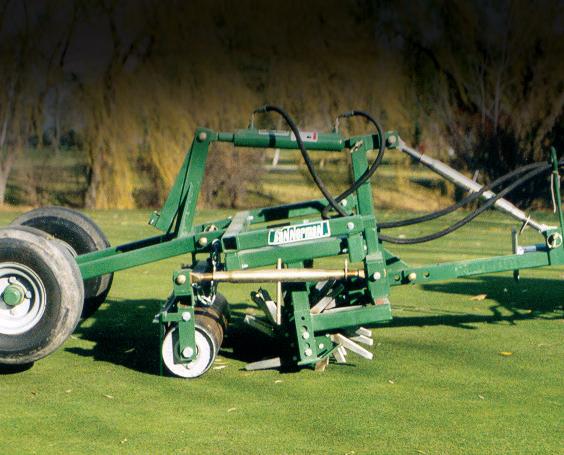

Written by Alessia Leitch, Student, University of Guelph.
Traditionally, women have not entered the golf turfgrass management profession, likely due to many years of golf being inaccessible to women and to historic gender stereotypes and their demands. However, in recent years, as gender roles are becoming a thing of the past and the industry has turned its attention to women, women have been considering turfgrass management as a viable career option, and the impact has been significant.
The 2025 Canadian Golf Course Management Conference, a collaborative effort between the Canadian Golf Superintendents Association (CGSA) and the Ontario Golf Superintendents Association (OGSA), marked a significant moment for the women in attendance. This year’s conference introduced its first Women in Turf Breakfast networking event — a devoted space for women in the industry to connect, share experiences, and celebrate their growing presence in the field. Morgan Creighton, the Women in Turfgrass Management (WITM) founder, proudly hosted the event and led the group in discussion. Creighton’s mentor program unites students enrolled in turfgrass post-secondary programs and mentors who have established successful careers in the turfgrass industry. “As we know, progress and innovation come from fresh perspectives, diverse voices, and collaboration. Today is just that,” emphasized Creighton during her opening speech.
Attendees at the breakfast also had the opportunity to hear from two speakers: Patricia Anne Miller, a PhD candidate in Environmental Sciences at the University of Toronto and Green Solutions Specialist— Golf Segment, Envu; and Laura Anderson,
a Dalhousie University graduate with a Bachelor of Science focused on Plant Science and Territory Sales Manager—Golf and Lawn Care, Envu.
Both speakers have built impressive careers and are passionate about fostering diversity. Through their compelling addresses, not only did they educate on two key topics: the benefits of niche disease diagnostic service, and understanding product registrations in Canada, they also encouraged aspiring female turf professionals to take chances in their careers, emphasizing the value of community in achieving success.
During her presentation “Turf Under the Microscope: Using Your Superpower to Stand Out”, Patricia Anne Miller shared her experience of being a woman entering the industry, using her microbiology background to define her role in the turf world. She shared her findings in a Harvard Business Review that women will apply to jobs if they qualify for nearly 100% of the required skills, while men will apply if they are eligible for 60% of the skills necessary. This stat was reflected in her own experience. She started her position as a greens solution specialist with little confidence that she was the right person for a turfgrass related job in the golf industry, despite her boss’s insistence that she had a valuable skill set.
Overtime, her superpower became clear to her. By putting turf under the microscope, she created a putting green program to treat co-occurring diseases. Patricia presents across Canada to explain these findings and provide this niche disease diagnostic service. Her expertise has not only gained her recognition in the industry but also allows her to advocate for taking bold steps in your career and set yourself apart. “Ask yourself, ‘I have this skill set, so how can I benefit my industry?’ Ignore the external voices that we were raised with,
you don’t need to know 100% of the job to apply, and try to contribute in your own personal way,” encouraged Miller.
Laura Anderson also shared her career journey, touching on the importance of women sticking together in the industry. “Having another woman by your side to help navigate your way through the industry is really important,” says Anderson. Women in the turfgrass industry often face similar challenges, whether proving their expertise, earning leadership roles, or overcoming biases. By standing together, they can advocate for equal opportunities and recognition for their contributions.
The most transformative career moments often come from taking risks when an unexpected opportunity arises. By working as an agronomy researcher for the Alberta Wheat Commission, Laura Anderson was given the chance to conduct field research in New Zealand. “The power of saying ‘yes’ to those opportunities led me to the role that I am in now,” Laura expressed. When women say “yes” to opportunities, they advance their careers and inspire and uplift others. Visibility in leadership roles, event participation, and industry discussions helps reshape perceptions and encourage more women to step forward.
As the turfgrass sector continues to evolve, so does the role of women within it. Events like the Women in Turf Breakfast and the work done by WITM motivate change, encourage a safe space for open dialogue, and foster a sense of community among women in the profession. For many, the event was a powerful reminder that the future of turfgrass management is undoubtedly more inclusive. “Seeing so many talented, dedicated women in one room, all passionate about the industry was inspiring,” said Nicole Shaw, one of the event’s participants. “It gives me hope for the future of our industry.” ■



AQUEDUCT FLEX contains an exclusive dual-action formula specifically designed to give turf care professionals superior performance with flexible options for dealing with stressful conditions, including water repellency and localized dry spot.
Benefits of Aqueduct Flex:


Provides rapid recovery of stressed turf with visible results in as little as 3 DAYS when used at the treatment rate
Provides up to 30-DAY PROTECTION against the development of localized dry spot when applied on a monthly basis at the preventative rate

Safe to use on all turf varieties

Written by Joel Johnston, Superintendent, West Haven G&CC.
With record rainfalls in many parts of the province and high humidity, it wasn’t uncommon for golf courses to require several extra fungicide applications in 2024. These unplanned applications have the potential to wreak havoc on a club’s balance sheet affecting the bottom line. Increased active ingredient load and intensifying concerns of developing a resistance to some formulations are also matters to consider. It is not realistic to think that these extreme weather patterns will decrease in the future. So, what can be done to reduce the number of fungicides we are applying to combat dollar spot, specifically on fairways, our largest treated acreage? This article will be a refresh on some of the agronomic basics that can help mitigate pathogens without treating chemically.
When dew is present, it can create an unnecessarily moisture-rich environment which is ideal for the fungal spores to develop, reproduce, and spread. By mechanically removing dew daily we can disrupt the environment where the disease is thriving. Many maintenance teams remove dew simply by mowing several times a week, but on no-mow days what can be done? It is very common to remove dew with a drag rope system. Dew dragging can be a 1- or 2-person job, and we know labour is not only hard to come by but also expensive. It might be worthwhile however to do a case study on the expense of that labour compared to the cost of applying 1or 2 more fungicide applications. Having these facts may help when reasoning with your stake holders. Another common dew removal method is rolling. Rolling can remove or reduce the moisture on the leaf blade where the pathogen infects and spreads. The benefits of this practice go far beyond dew removal. Rolling can increase turf density; a strong dense stand has a better ability to defend against disease but also an increased proficiency for recovery. Rolling can also increase drainage pushing water through the canopy into the soil profile. Choosing roll over mowing can also reduce turf injury or wounds where the pathogen enters the plant.
Regardless of how you remove dew this practice can reduce dollar spot outbreaks and increase the duration of fungicide efficacy.
Having properly timed and effective watering practices is the same principle as dew removal. Maintaining dry leaf blades reduces the spread and severity of pathogens. Having the latest possible watering period before sunrise reduces the amount of time the plants and fungal spore sit wet. Also reducing the frequency of watering by employing a deep and infrequent strategy limits the days that moisture is present. We know this practice also improves root deep and over all plant health, which contribute to recovery and resistance to disease issues.
For most clubs the idea of re-grassing fairways is a larger undertaking. Taking on a project like that just to reduce dollar spot severity doesn’t seem practical. That being said, if your club has already decided to do a renovation, it makes sense to base your decision on grass variety according to dollar spot resistance on National Turfgrass Evaluation Program (NTEP) trials. For many, this decision may entail picking a more resistant variety for divot mix, and over time the impact of this will be greater than expected over time.
Managing thatch can play a key role in improving plant health but also reduces the growing environment for disease. The decaying plant tissue found in areas with excessive thatch hold moisture and is the perfect environment for fungal pathogens. Thatch management also contributes to having a healthy root zone, and likewise healthy turf. Thatch management can range from vertical mowing to core aeration. Utilizing tools such as OM 246 to quantify these factors can help decide what measures to take rather than guessing or doing the same actions year over year according to the calendar. Having this data can also ensure that agronomic standards are being met across
each of our individual properties as some areas may be more prone to thatch accumulation than others.
Soil health can imply several factors. Having a good aeration program helps not only to reduce thatch but also helps with nutrient penetration and you guessed it, water percolation, helping to keep the turf surface as dry as possible. Soil health has a strong correlation with cation exchange capacity (CEC). Aeration helps increase CEC, but amending the soil to change the physical properties through topdressing provides another avenue. Thinking about the basics of our soil triangle is crucial. Increasing CEC can be achieved with organic matter topdressing and a reduction can be achieved with coarse sand topdressing. Understanding your soil on your property will help meet testing recommendations thus increasing plant health and reducing pathogen severity.
The relationship between nitrogen fertility and dollar spot is closely linked and balance is essential. Overly lush turf is often attributed to over fertilizing resulting in excessive growth which can make the plant more susceptible to some disease infections. Alternatively, not applying enough nitrogen can also weaken the plant and increase the severity of other pathogens. Ideally, consistent nitrogen applications throughout the growing season help maintain healthy turf. Applying appropriate amounts of nitrogen fertility according to plant needs and soil testing results can help grow healthy plants and improve recovery.
Turf managers should always play offense when it comes to disease management. Employing those positive cultural practices like dew removal, thatch management, proper fertility and irrigation programs should be on the front-line in the quest for healthy turf. Quite often though these cultural practices are not enough, a threshold is crossed, and fungicides must be applied to maintain healthy turf and quality playing surfaces.
Battling dollar spot is not a one-dimensional undertaking. Applying more fungicide and increasing budgets is not a long-term solution, as golf goes through economic ebbs and flows. Increasing active ingredient loads and building a resistance to chemistry is something that will continue to be closely scrutinized. However, implementing
Keep the following points in mind when devising a disease management plan for your course:
1. Good scouting record keeping is key. With good IPM records and by identifying the key indicator and hot spot areas of your course, you will be able to predict when turf disease outbreaks will occur, which can help you decide when to make…
2. …preventative fungicide applications. It is more beneficial in the long run to apply a fungicide preventatively, when inoculum levels are low, than curatively, when shorter control intervals may result and higher rates of one (or two) fungicides may be required. When opting to tank mix multiple fungicides, ensure both offer control over your target disease.
3. Make smart fungicide choices. FRAC rotation management, choosing the most effective fungicide for the target disease, tightening spray intervals when disease pressure is high and applying at the proper rate for the desired length of control are all crucial to a sound management program. The number of fungicide choices can be overwhelming, and new products have entered the market recently. Consult your vendor or distributor representative for help with your disease control program but be sure to connect with your neighbours and find out what they are dealing with and what has worked (and maybe not worked so well) for them.
even one of the strategies mentioned above could help reduce the severity of dollar spot dramatically. Having healthier, more playable, and aesthetically pleasing turf will mean a better experience for members and golfers, which is a true measurement of our success as turf managers. ■


Written by & photos provided by Andrew Marsan, Technical Turf Sales, Plant Products.
I recently had a conversation with a superintendent – a self-proclaimed purist –who summed up his skepticism about data collection in a way that stuck with me:
“Too much data takes the feel out of growing grass. Data is like a swing aid—it gets in your head, screws with your gut, and makes you chase numbers instead of playing conditions and healthy turf.”
I couldn’t help but picture the scene from Tin Cup—Roy McAvoy in his Winnebago, strapping on every training gadget imaginable, lost and searching for an answer. And honestly, I got it. It was only a moment ago that I was that same guy. It was all about the feels and the smells and the art of greenkeeping as an instinct that grows from within and evolves over time. Something that is refined over years of experience, trial and error, and more than a few humbling moments. You can’t learn that from a textbook, chart, or spreadsheet. Data collection, what a load of rubbish.
The times they are a-changin’, though. The conversation around golf course data collection has evolved. I’ve covered the ‘how-to’ before—now it’s time to highlight
those putting it to work. You see, plenty of turfgrass managers are finding ways to use data without losing their feel—they’re letting it complement their instincts, not override them.
In 2022, Golf Course and Property Manager Ian McQueen and his team had St. George’s G&CC in optimal condition to host the RBC Canadian Open. “Firmness, moisture content, and green speed were exactly where we thought the greens would perform their best,” says McQueen. “These conditions were produced by pre-planned agronomic and cultural programs that allowed us to achieve ideal putting surfaces for tournament play. What we have realized over the last two seasons is that we can produce better, more consistent putting surfaces for the entire season through daily data collection methods. This data helps to guide adjustments, ensuring predictable, repeatable conditions for our members and guests every day.”
For Andre Aymar, Superintendent at Lambton G&CC, day-to-day consistency of the surfaces is key. “When looking at the entire process, it doesn’t add a lot of time to daily tasks, and it’s been invaluable in helping us understand how our surfaces perform from one day to the next.”
“Clipping volume has been the data point we
have focused on the most,” says McQueen. “There’s a direct correlation to wear management, organic matter management, and trueness of the surfaces over the course of the season. It has also allowed us to identify any inconsistencies in mower setup. Operators are now aware of what to expect from the surfaces they mow daily, and we can ensure we are getting the best quality of cut from mower to mower.” Newly appointed Golf Course Superintendent at The Thornhill Club, Cory O’Neil, echoes this, adding that it has allowed him to time nitrogen and PGR applications more precisely, giving him the ability to maintain the desired growth rate and ideal green speeds. “Collecting and recording clipping volume takes an additional 30 seconds per green, and there is no reason not to do it when the data over time has proven to be vital to our operation.”
Tracking clipping volume isn’t the only way data is reshaping agronomic programs.“Being dialed into the daily performance metrics has also allowed us to see how different practices like top dressing, aerification, irrigation, and nutrient application affect these numbers. It can change the way you look at things,” says O’Neil. Aymar concurs, adding that tracking key metrics like green speed, firmness, trueness, and smoothness of the surfaces at Lambton has helped fine-

tune the operation. “Without a doubt, data collection has been very beneficial for us to better understand our surfaces. Ultimately, a lot of times the data supports what we already know, and other times it has allowed us to adjust our practices to achieve the desired playability. It has also been very effective as a communication tool when reporting back to upper management or club governance.” McQueen also stresses
the value of the data when it comes to presenting information to Greens Committees. “We use the data to create graphs that illustrate our target goals compared to actual measurements. Showing members a visual representation of moisture levels compared to firmness, overlaid on rain events, for example, is a great way to explain why the greens were softer at certain times of the year. It’s a simple way to translate agronomic realities into something that may be more relatable to club leadership.”
“Data collection is often perceived to be overwhelming or something that we don’t have the added time for,” says O’Neil. “It will be an important tool in my first year as a superintendent at a new property.” As Aymar points out, the benefits far outweigh the effort. “In my experience with data collection, I’ve seen enough benefits to warrant the time doing it. Those benefits
may vary from manager to manager and course to course, and that’s the beauty of it. Just start small and see how it can help you.” McQueen emphasizes the impact on daily decision-making. “By collecting this information we can manage the turf precisely, controlling growth and improving playing surfaces without going backwards. This has allowed us to minimize disruption on the greens during the peak season, providing the membership and guests with the best conditions possible.”
Here’s the takeaway—use data as a tool, not a crutch. The numbers don’t replace the feel; they refine it. They help us understand trends, cause and effect, and how the turf responds over time. They provide context for what we’re already seeing and feeling. Data just puts those observations into measurable terms, making it easier to track changes, diagnose problems, and make adjustments before small issues become big ones. It’s about giving yourself more information to work with.
In the words of Tin Cup, “Some of this sh*t might actually work, y’know... I mean, I think there’s something to this hat with the golf ball pendulum thing... may be on to something here...” ■




(L-R) Ian McQueen (St. George’s G&CC), Cory Janzen (Westmount G&CC), Secretary-Treasurer Ryan Scott (Oakville GC), Vice President Al Schwemler (The Toronto GC), President Tim Muys (Piper’s Heath GC), Mike Pellerin (Saugeen GC), Owen Russell (Markland Wood GC), Jessica Aytoun (Sutton Creek GC), Immediate Past President Jason Boyce (Smuggler’s Glen GC).
The board of directors in 2020 were as follows: Tim Muys, Piper’s Heath Golf Club (president), Al Schwemler, The Toronto Golf Club (vice president), Ryan Scott, Oakville Golf Club (secretary treasurer), Jason Boyce, Smuggler’s Glen Golf Course (past president), Jessica Aytoun, Sutton Creek Golf Club, Mike Pellerin, Saugeen Golf Club, Corey Janzen, Westmount Golf and Country Club, Owen Russell, Markland Wood Golf Club and Ian McQueen, St George’s Golf and Country Club. Sally Ross was the executive director, and Courtney White was the member programs and services.
Rhod Trainor retired from the Hamilton
Golf Club and was replaced by Peter Asma from Greensmere Golf Club. Dennis Piccolo retired from St. Catharines Golf Club and was replaced by his assistant Dan Sliasas. Michael Dermott retired from Oakdale Golf Club and was replaced by Patrick Greenman from the Briars Golf Club. Sean Harney left Hidden Lake Golf Course and moved to White Squirrel Golf Club. Chris Bruining left Nottawasaga Inn Resort and went to Vesper Hills Golf Club and Brad Cameron left East Park Golf Gardens and went to Maple Ridge Golf Club.
Chuck Egleston, long-time Nutrite technical sales representative, passed away.

The Ontario Golf Course Management Conference was held in Niagara at Sheraton on the Falls and the keynote speaker was Jack Armstrong, the voice of the Raptors.
Chuck was well known and respected by both golf superintendents and the lawn care operators in Ontario and Western Canada.
The Ontario Golf Course Management Conference was held in Niagara at Sheraton on the Falls and the keynote speaker was Jack Armstrong, the voice of the Raptors.
The OGSA acknowledged Alan Beeney, OGSA past president (1977) and Life Member for reaching the 50-year member milestone.
25-year membership awards were presented to Randy Booker, Otter Creek, Karen Brown, assistant, Granite Ridge, Tracy

Fowler, assistant, Hamilton Golf Club, Scott Heron, The Toronto Hunt, Terry Magee, mechanic, Magna, Tom Margetts, City of Kitchener, Greg McFarlane, The Thornhill Club, Doug Breen, Golf North and Donald Smith, Oakville Executive.
There were no tournaments because of Covid-19 restrictions.
Essential property maintenance on golf courses was allowed and golf courses were allowed to open with the following restrictions:
• Social distancing and limiting players access to common areas, removing course benches, ball washers and trap rakes.
• Safety devices were made to lift the ball out of the hole without touching the pin.
• Golfers were allowed on the property
no more than 30 minutes prior to their tee time, tee times were changed from 8 minutes to 10 minutes to keep groups from waiting at tees and one person was allowed per cart.
• Washrooms and pro shops were open, food services were closed but they did open up outdoor patios.
• Sand traps were not maintained so there was a free lift.
Golf courses were very busy as people had the time to play, weren’t traveling anywhere and had the money to spend on golf. Golfers were very happy to be able to play with these restrictions and customary handshakes at the end of the game were replaced by clicking putter heads or fist bumps. ■

Barry Endicott Retired Golf Course Superintendent Brampton, Ontario.
Tel: 905-846-1440 barry.endicott@gmail.com

By Doug Breen, Superintendent, Golf North Properties.
They say that if you live long enough, you’ll get to see history repeat itself. That there is truly nothing new under the sun, and eventually the same types of humans, will fall into the same types of habits, make the same decisions, and we are forever doomed to walk the same path - over and over again.
Apparently, I have lived that long.
A few months back, I heard rumblings that our friends in Quebec are rushing headlong into another round of Municipal pesticide bans. While this may be a new dance for the younger Superintendents; for my generation, this is a case of ‘déjà vu all over again’ (to quote an even older guy). We already did this once.
Let me take you back to the summer of 2003. Apple introduced the third generation iPod along with iTunes. The iPhone was another four years away from release, so we all had Blackberry’s (I still would, if they still made them). American Idol was brand new, and Finding Nemo was dominating my household. Eighteen-year-old Cristiano Ronaldo was playing his rookie season in the Premiere League. Buffy the Vampire Slayer was the most popular thing on TV, the Terminator was Governor of California, and Britney Spears kissed Madonna on MTV.
But what ended up dominating my life for the following years, were the repercussions of a little known, two-year-old Supreme Court decision, which upheld a Municipal Cosmetic Pesticide Ban By-Law in Hudson, Quebec. It took a while for that seed to germinate, but when it did, it grew like the weeds they weren’t allowed to kill anymore. Before longOttawa, the Town of Caledon, and every other Municipality in Ontario was facing public pressure to adopt a similar By-Law. At the time, I was on a rural Township Council with four farmers; so we dispensed with this one pretty quickly, but urban Ontario was awash with Dandelion Festivals and public meetings to gather the opinions of the uninformed.

I had recently joined the OGSA Board, but since I had six years of experience on Township Council and a decade of teaching pesticide safety courses to farmers for the Ontario Government - I was volunteered to represent the Superintendents Association and the Golf Industry at countless public meetings, townhalls, and ultimately at the Environment Minister’s office. I was far from alone. Wendy Burgess was there, Vince Kishimoto came from the NGCOA, and the late Teri Yamada represented the RCGA (now Golf Canada). Between meeting with the Minister’s office and various MPP’s, we spent our evenings trying to fight the current of public opinion at various gatherings across the province. We weren’t home much in those days. The meetings were an odd mix of pseudo-science, theatre, and heckling. Random anecdotes would receive standing ovations, while actual Guelph Professors (Dr. Solomon was a rock at these things) would be ridiculed and mocked.
In the end, the Provincial Government realized that having swiss cheese legislation, where one county could keep good greens, while the next town over would be riddled with disease and weeds, was unfair and unreasonable competition. Eventually, the actual scientists at the Ministries of the Environment and Agriculture took control of what was always their responsibility, and the IPM program (which you all know and love)
was the compromise that was reached. I tell anyone who complains to me about it, that things could have been much, much worse. At one point, I was absolutely convinced that we were going to lose the use of all pesticides on golf courses in Ontario.
So the million dollar question is, “Why is Quebec doing this again, and should we be concerned in Ontario?” Well, it’s time for the political science nerd in me to shine!
It is a fundamental difference in how Upper and Lower Canada were structured, way back in the 18th century. France controlled Lower Canada (now Quebec), and they believed in the power of city states to control their own destiny. The higher levels of government were in many ways subject to the whims of local attitudes. It’s a much more populist way of governing – sort of a ‘power to the people’ thing.
The British, on the other hand had no such delusions that the opinions of the ‘great unwashed’ were of any consequence. Under British democracy, the municipalities are ‘creatures of the state’ and only have the authority given to them by the Crown. In Canada, you don’t own your property, King Charles owns it, but he lets you use it at his great mercy. Queens Park could disband every Municipality in Ontario tomorrow with the stoke of a pen and run the whole she-bang from Toronto.
As a result, the MECP has the authority to crush a Cosmetic Pesticide Ban (or any other Municipal By-Law), whereas in Quebec the province (ironically called the National Assembly) can only strike down By-Laws that don’t meet the minimum standard. Ergo, a Quebec municipality can make more restrictive rules any time they want - and here we are.
If the Ontario government continues to hold the position that the IPM program, alongside MECP inspections, is adequately protecting Ontarians from the risk of pesticide use, we will be fine. If that position changes, I assure you that we will let you know – and I guess we’d have to do this all over again. ■

